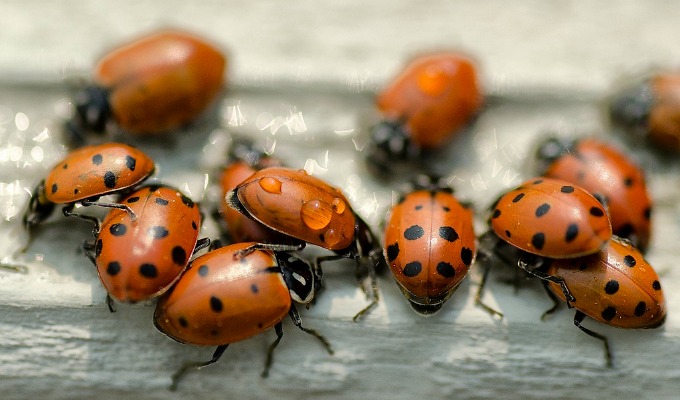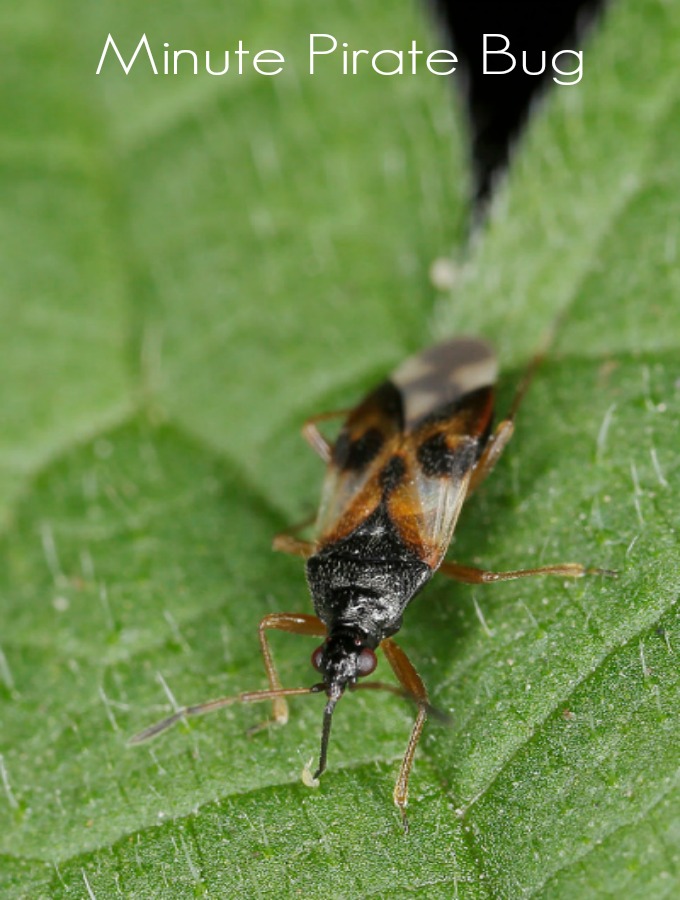Welcome Gardening Friends! Thanks for stopping by.
Do you ever see insects in your garden and wonder which ones are friendly and which ones aren’t? Which ones are helping and which ones are harming? Then keep reading, I’ve put together 10 Beneficial Insects You Want in Your Garden!

Image by snowpeak under a Flickr Creative Commons Attribution License
10 Beneficial Insects You Want in Your Garden

Image by zoxcleb under a Flickr Creative Commons Attribution-ShareAlike License
1. Bees
Bees are pollinating powerhouses and you want to see as many of them in your garden as you can get. The more pollinators you have in your garden, the more fruit your plants will produce.

Adult Image by berniedup under a Flickr Creative Commons Attribution-ShareAlike License, Pupae Image by Bev Wagar under a Flickr Creative Commons Attribution License
2. Braconid Wasps
If you have ever found a tomato hornworm on your plants, you have seen the havoc that they can wreak. It won’t take them long to munch away all of the leaves on your tomato plants and you should squish it as soon as possible. However, if you ever find one that looks like the picture above, leave it alone. Braconid wasps are predatory and these beneficial insects lay their eggs in pests like the tomato hornworm. The larva feed on the caterpillar’s body, then emerge and form cocoons. This ultimately ends in the demise of the hornworm and more wasps to hone in on your other pests.
Some Pests Targeted by Various Braconid Wasps:
- Aphids
- Beetles
- Caterpillars
- Squash Bugs
- Stink Bugs

Image by Michael Khor under a Flickr Creative Commons Attribution License
3. Butterflies and Moths
Butterflies and moths are not just dainty beauties that like to flit around your garden. They serve as pollinators for many different flower species, enabling them to produce fruit. They can potentially be harmful while in the larval stage as caterpillars since they eat away at leaves. Many times, though, it’s not enough to ultimately harm the plant and you can allow them to complete their metamorphosis.

Image by Bennyboymothman under a Flickr Creative Commons Attribution License
4. Damsel Bugs
Don’t confuse damsel bugs with damselflies, which are similar to their relatives, the dragonflies. Damsel bugs are true insects that love to go after many of the pests that snack on your vegetable garden plants.
Pests Targeted by Damsel Bugs Include:
- aphids
- small caterpillars
- moth eggs

Image by Join the Dots under a Flickr Creative Commons Attribution License
5. Dragonflies
Dragonflies can consume their bodyweight in bugs every 30 minutes, so they’re a great help in keeping the pests at bay!

Image by Smabs Sputzer under a Flickr Creative Commons Attribution License
6. Hover Flies
Hover flies, also known as syrphid flies, flower flies and drone flies, are great for controlling aphids, thrips, scale insects and caterpillars. They are almost as effective as lady bugs in controlling aphids!

Image by Mick Sway under a Flickr Creative Commons Attribution-NoDerivatives License
7. Lacewings
Lacewings are a helpful addition to the garden because the larvae are voracious predators of many pests including: aphids, spider mites (especially red mites), thrips, whitefly, leafhoppers, some beetle larvae, eggs of pest moths, and mealybugs.

Image by norio_nomura under a Flickr Creative Commons Attribution-ShareAlike License
8. Lady Beetles
Lady Beetles, more commonly known as Lady Bugs, are a popular addition to many gardens. They are sold in local nurseries because they’re so effective at controlling aphids and other pests like small caterpillars, thrips and other soft-bodied insects.

Image by gbohne under a Flickr Creative Commons Attribution-ShareAlike License
9. Minute Pirate Bugs
Minute Pirate Bugs are tiny bugs (less than ⅕ of an inch long!) that are helpful in ridding your garden of pests including: aphids, spider mites, and thrips. They are very predatory, and can consume up to 20 thrips larvae every day!

Image by siamesepuppy under a Flickr Creative Commons Attribution License
10. Praying Mantises
Praying Mantises are helpful hunters because they prey on flies, crickets, beetles & moths. These are great bugs to see in the garden! But you should note that they are indiscriminate hunters…they eat pesky insects as well as beneficial ones, so just prey that they eat the pests! 😅
Honorary Mention: Spiders
Spiders are not included on this list because they are not actually insects. Like other arachnids, they have eight legs, while insects have six. Many people shudder just at the thought of them. However, they truly are one of the most beneficial creatures to have around your garden since they take care of a lot of pests. If you can stifle the urge to squash any that are nonpoisonous, your garden will thank you!
What are your favorite beneficial insects? Let us know in the comments below!
Latest posts by Vanessa Myers (see all)
- Preparing Your Garden for Winter - September 27, 2017
- Can You Grow Blueberries in Utah? - July 7, 2017
- It’s Time to Thin Fruit Trees - June 8, 2017
